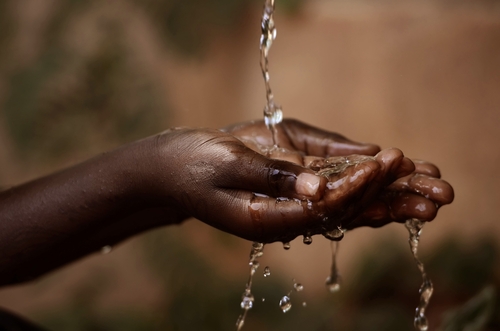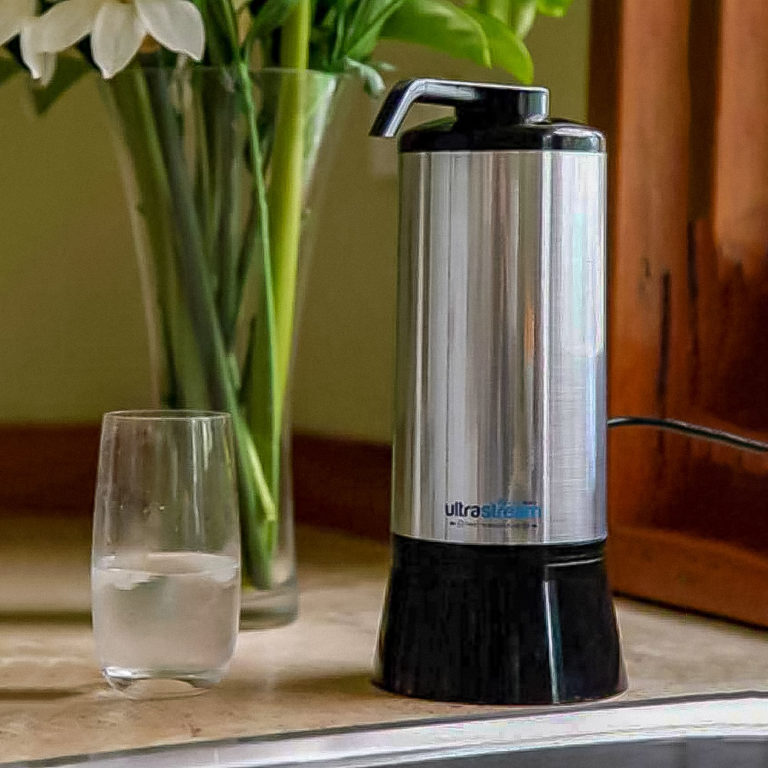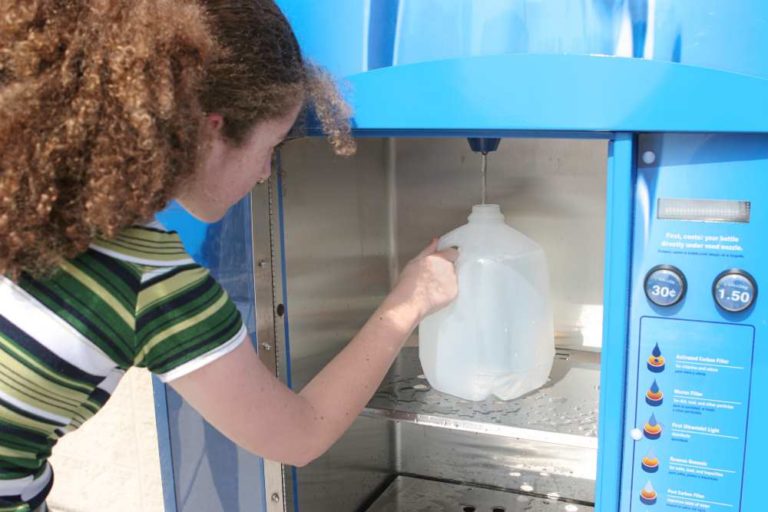
Water for society – Including all
World Water Week, the leading annual event on global water issues, was held in Stockholm from August 25-30, 2019. https://www.worldwaterweek.org World

To answer the question of how a water ionizer works, we need to understand what’s behind the filtration process.
Water ionizers are typically connected directly to your faucet, or installed using an under sink kit.
The first task is to filter out harmful components of the water: chlorine, trihalomethanes, phenols, sediment, odor, taste, organic waste, and bacteria of all kinds. AlkaViva achieves this by the use of a multistage activated carbon filter containing tourmaline and coral calcium.
Next, a small electrical charge is introduced into the water through platinum-coated titanium electrodes. The process of electrolysis that follows takes place in a patented chamber designed to separate the water into two streams of ionized water:
Positively charged ions gather at the negative electrode to create reduced water, which concentrates available alkaline minerals, such as calcium, magnesium, and potassium from the source water. This alkaline ionized water is drawn for drinking and cooking, through the main stainless steel spout.
Negatively charged ions gather at the positive electrode to make oxidized water, which concentrates acid minerals such as nitrates, sulfides, chlorides, and fluorides from the source water. This acid ionized water has a myriad of external uses. It is discharged into the sink.
A range of pH settings from neutral to very alkaline or very acid is available at the touch of a button. The electrodes are cleaned in an automatic cleaning cycle.
View a demonstration the effectivenes of a water ionizer:
Share with Friends
For over 20 years, thousands of customers worldwide rely on Best Water for our excellent one-to-one support, high quality products and competitive pricing. If you have any questions at all please call us. Our experienced techs are ready to help! Learn more about us.
Featured
Drink healthy, hydrogen-enriched water on the go with the AOK 808
The only USA-made water ionizer filter that has certified independent test results for reducing 172 contaminants by 99.9%.
World’s most advanced natural filter, alkalizer, ionizer and hydrogen system all in one affordable package.
Follow Us
Latest Posts

World Water Week, the leading annual event on global water issues, was held in Stockholm from August 25-30, 2019. https://www.worldwaterweek.org World

It’s Saturday morning, the sun is shining and it’s a perfect day to go out for a paddle. You grab

Since time immemorial scientists, philosophers and even us mere mortals have asked the question: are we alone in the universe?
Popular Posts

Water vending machines are as common in grocery stores as ATM machines but what kind of water are they really
For over 20 years, thousands of customers worldwide rely on Best Water for our excellent one-to-one support, high quality water ionizer products and competitive pricing. If you have any questions at all please call us. Our experienced techs are ready to help! Learn more about us.
© 2019 Best Water Inc. All Rights Reserved. Website & Branding by Elite Web Design